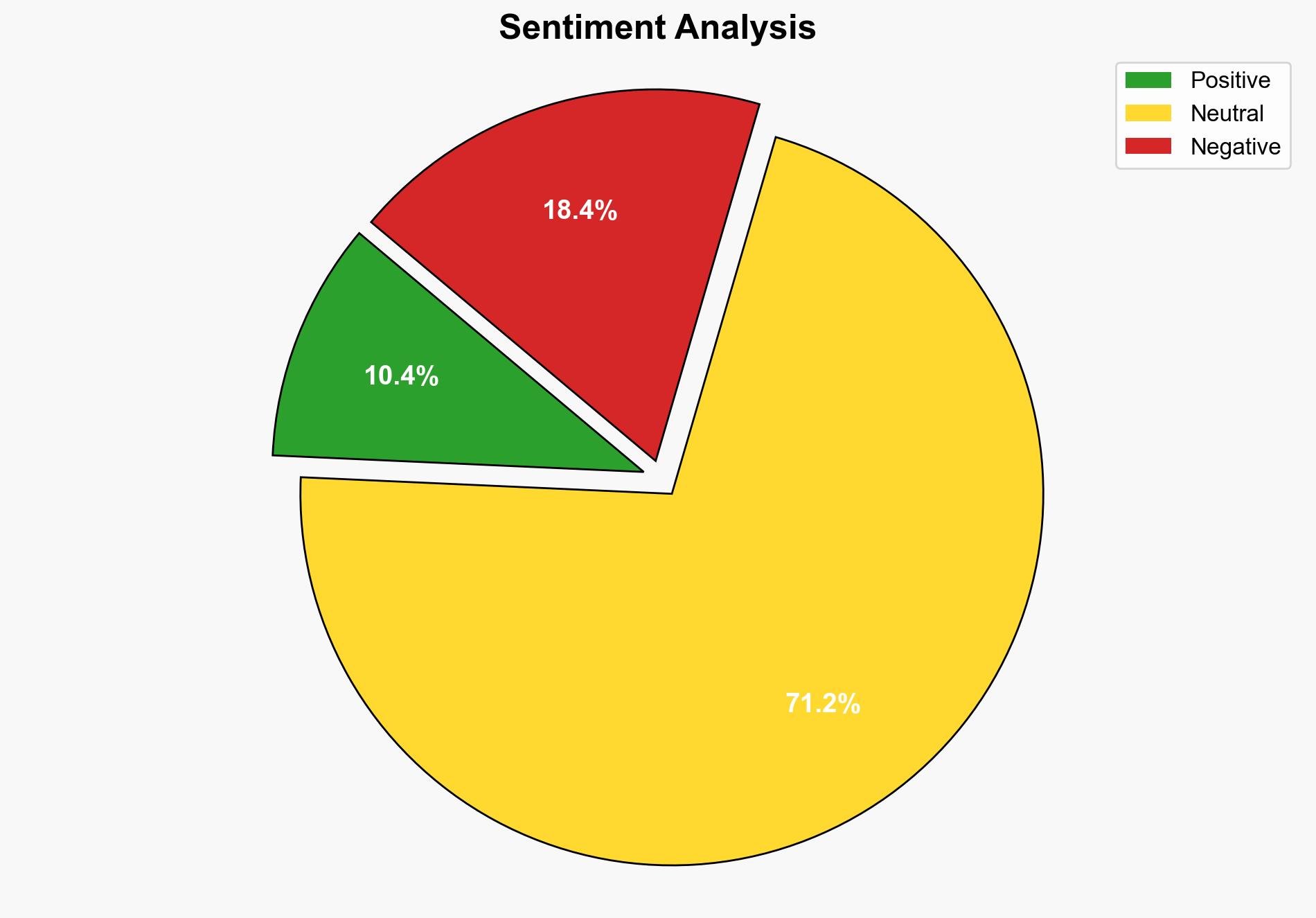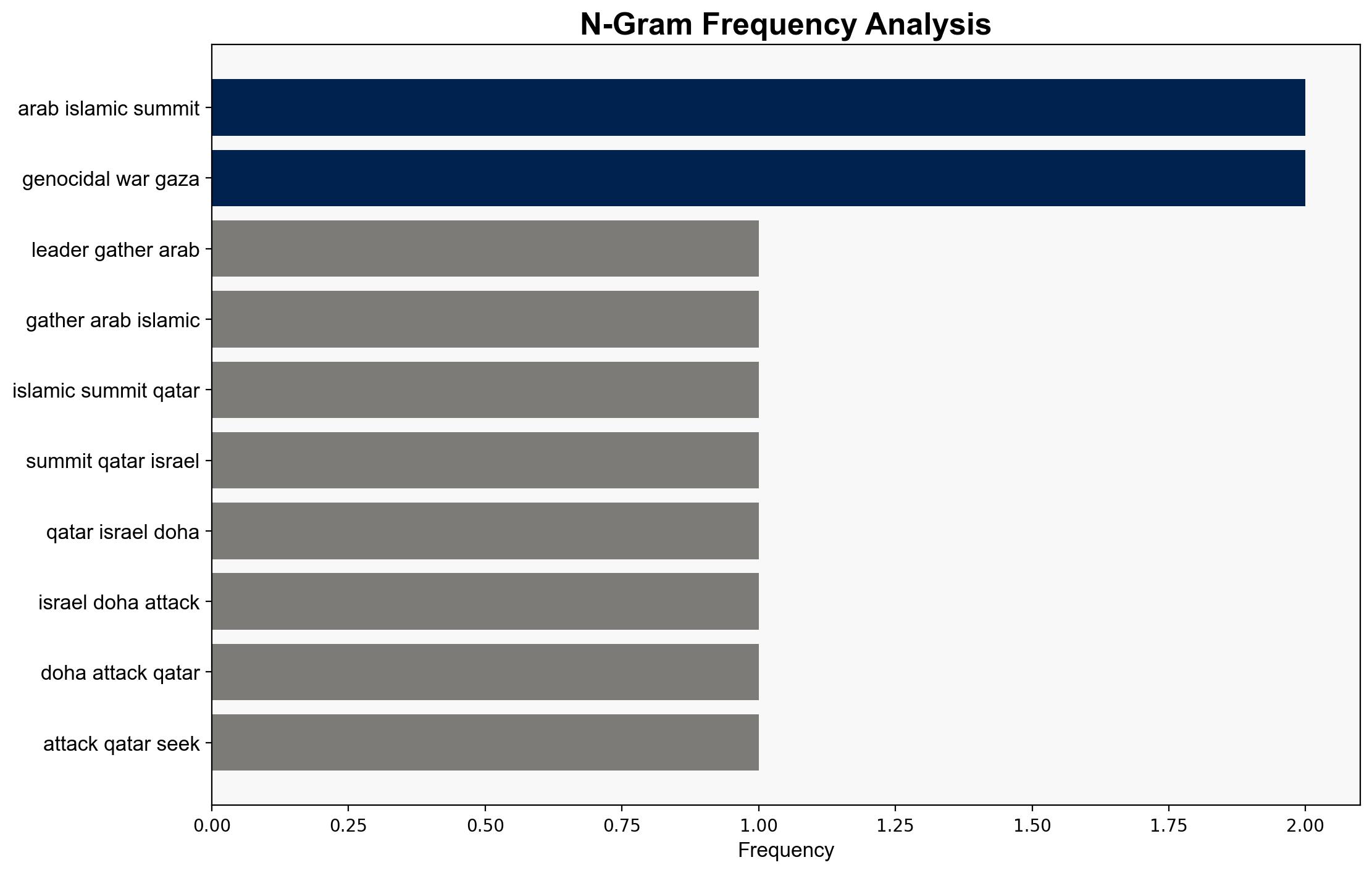Leaders gather for Arab-Islamic Summit in Qatar after Israels Doha attack – Al Jazeera English
Published on: 2025-09-14
Intelligence Report: Leaders gather for Arab-Islamic Summit in Qatar after Israels Doha attack – Al Jazeera English
1. BLUF (Bottom Line Up Front)
The most supported hypothesis is that the Arab-Islamic Summit in Qatar aims to forge a unified regional stance against Israel’s recent military actions, leveraging collective diplomatic and possibly economic measures. Confidence level: Moderate. Recommended action: Monitor summit outcomes for shifts in regional alliances and prepare for potential escalations in regional tensions.
2. Competing Hypotheses
1. **Hypothesis A**: The summit is primarily a diplomatic effort to unify Arab and Islamic countries in condemning Israel’s actions and to seek a peaceful resolution through international pressure and negotiations.
2. **Hypothesis B**: The summit is a precursor to a more aggressive regional strategy, potentially including military or economic actions against Israel, driven by heightened regional tensions and a desire to counterbalance Israel’s influence.
Using the Analysis of Competing Hypotheses (ACH) 2.0, Hypothesis A is better supported by the current intelligence, as the summit’s agenda focuses on diplomatic discussions and resolutions. The presence of international leaders and the emphasis on drafting a resolution suggest a preference for diplomatic channels.
3. Key Assumptions and Red Flags
– **Assumptions**: It is assumed that all participating countries are aligned in their stance against Israel, which may not account for internal divisions or differing priorities.
– **Red Flags**: The presence of Iran’s security chief and calls for a joint operation room suggest potential for military coordination, which could indicate a shift towards Hypothesis B.
– **Blind Spots**: The role of non-Arab states, such as the United States, in influencing summit outcomes is not fully explored.
4. Implications and Strategic Risks
– **Geopolitical Risks**: Increased regional polarization could lead to further instability, impacting global energy markets and international relations.
– **Economic Risks**: Potential sanctions or economic measures against Israel could disrupt trade and investment in the region.
– **Escalation Scenarios**: A failure to achieve consensus at the summit could lead to unilateral actions by individual states, increasing the risk of military confrontations.
5. Recommendations and Outlook
- Engage in diplomatic dialogues with key summit participants to understand their positions and intentions.
- Prepare contingency plans for potential economic disruptions or military escalations.
- Scenario Projections:
- Best Case: The summit leads to a unified diplomatic initiative that de-escalates tensions.
- Worst Case: The summit fails, leading to increased military confrontations and regional instability.
- Most Likely: A mixed outcome with some diplomatic progress but continued underlying tensions.
6. Key Individuals and Entities
– Masoud Pezeshkian
– Shehbaz Sharif
– Anwar Ibrahim
– Ali Larijani
– Gideon Saar
– Marco Rubio
– Benjamin Netanyahu
7. Thematic Tags
national security threats, regional diplomacy, geopolitical tensions, Middle East conflict





